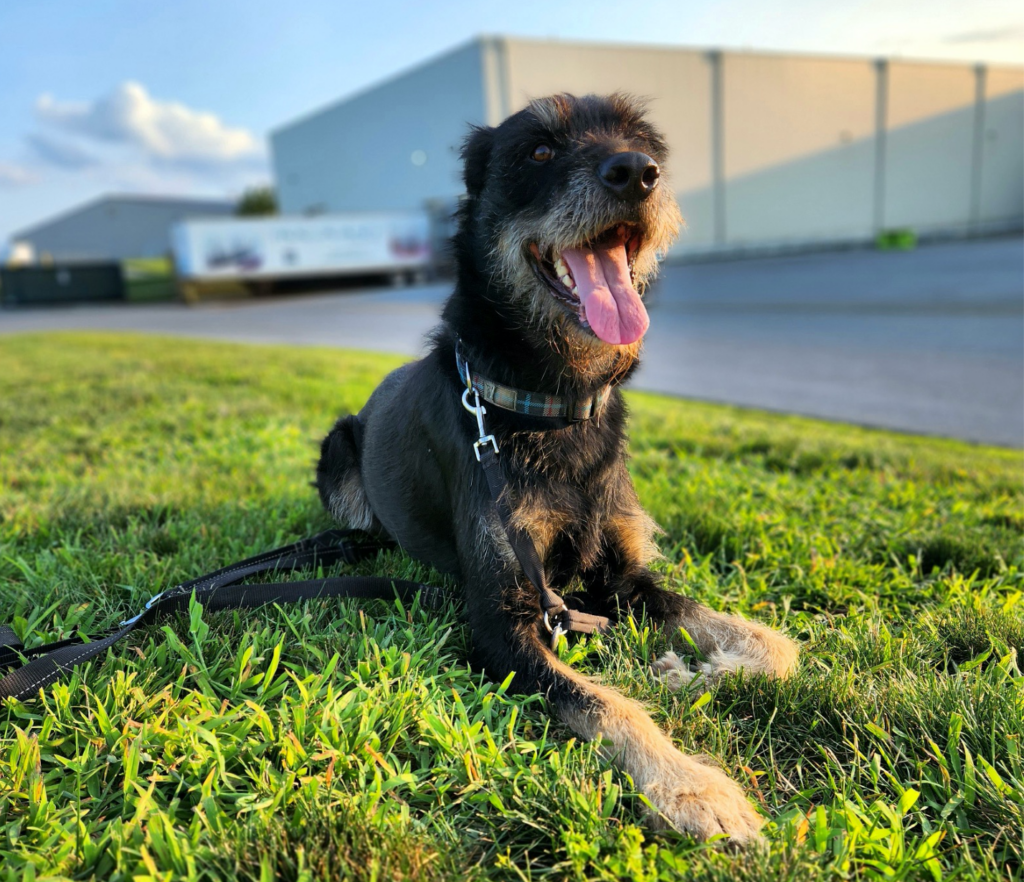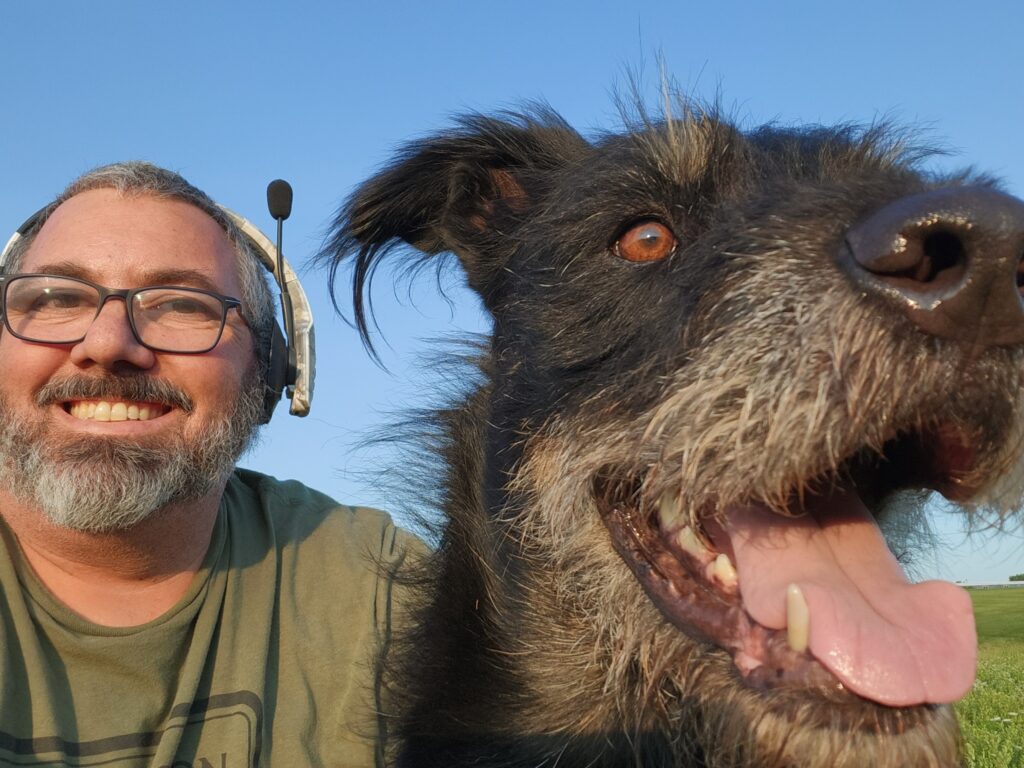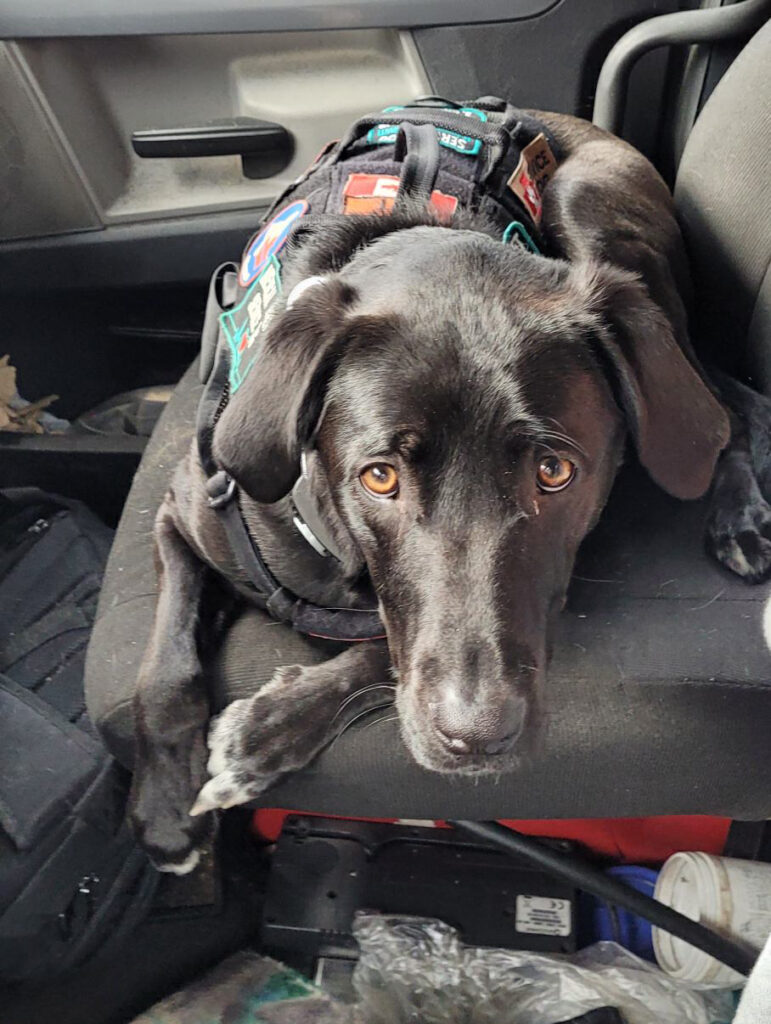Truck drivers sharing cabs, and companionship, with their pets
George Hatch and Amanda Smith haul goods in different provinces and never met, but they both have something in common – they’re paid to hang out with their best friend while on the job.
Smith’s dog, Nyx, is a trained psychiatric and cardiac alert service dog. She is a two-year-old 75-pound black Labrador and Anatolian Shepherd mix, who accompanies her on trucking journeys to ensure her safety. Hatch’s dog, Tucker, a mix of German Shepherd and Irish Wolfhound, who joined him after his previous dog retired, accompanies him on drives to Pennsylvania.
Both truck drivers can’t imagine trucking without their pets.
“You’re actually going to look forward to going and doing your job day to day if you can spend it with your best friend,” Smith says.
“I talk to my service dog all the time. People must think I’m crazy when they’re driving by. But it definitely helps just having her around.”
According to Truckstop’s survey of 500 U.S. owner-operators, half of them travel with their pets for emotional support, and 46% would consider a different job if they couldn’t bring their pets.

Fleets and pet policies
Luckily, many Canadian drivers don’t have to worry, since more fleets are adopting pet policies, says Jessica Mata, driver recruitment and retention manager at Wellington Motor Freight.
The trucking industry is realizing that having a pet in a truck is not any different from having a passenger, she says, highlighting that fleet management does not take on any additional challenges or issues by allowing pets in vehicles.
“We would not be willing to risk losing a driver just to not have a pet policy in place. It [having pets] does not deter [drivers] from doing their job safely and professionally,” Mata says.
While Hatch says some chemical factories or agricultural facilities may impose restrictions due to concerns about potential disease transmission that would affect their operations, truck stops and customers’ facilities are generally pet-friendly, both Smith and Hatch agree.
Nyx, for example, receives lots of affection from facility employees, and Smith even got her a safety vest so people could easily spot her outside the truck.
“They [people] are really accommodating and very happy. It actually brightens their day when they see a dog. I’ve had multiple security guards come out and ask if they can pet her. And she’s happy, wagging her tail, and everybody loves her,” Smith says.
To avoid drivers having to leave their pets at the gate, CAT takes customers’ pet policies into account when planning loads and assigning drivers to routes, says Michael Robinson, vice-president of safety, compliance and driver development. They also update information about facilities, like truck stops, in their internal Isaac systems based on driver feedback.

Pet-friendly companies and recruiting
Existing pet policies can sometimes be a governing reason for drivers to join CAT, Robinson says, adding that at least 10% of their truckers travel with dogs or cats.
Fleets like CAT, Wellington Group of Companies, and RST Sunbury are just some of the pet-friendly companies. According to Carriers Edge, the organizer of The Best Fleets to Drive For competition, other Canadian fleets like Challenger, Erb Group of Companies, and Kriska Transportation Group allow pets.
Wellington doesn’t even require a safety deposit, Mata says. However, drivers do have to sign an official waiver, claiming that the owner is fully responsible for the animal’s behavior and wellbeing. The waiver also obligates drivers to keep up to date on pets’ vaccinations, copies of which are kept on file.
Around 20 drivers at Wellington Motor Freight travel with dogs. And George Hatch is one of them – he’s been driving for the fleet for four years now.
Even though driving with his first dog started as a practical decision because he was single at the time, when Hatch was getting Tucker he knew he was choosing a trucking partner. He even took the pup out for multiple drives before committing to him, to make sure he would take the traveling well and would behave properly.
“He had to be calm when I was crossing the border both ways. Because you can’t be trying to cross the border with a dog barking and acting like crazy.”
Cleaning and locking
Some minor challenges like dog hair can be solved with a cordless vacuum. And wiping the dog’s paws from dirt during the rain might be inconvenient. However, these are tiny bumps along the road compared to when your dog locks you out of the truck, Hatch says. This is why he always carries two sets of keys with him. He had to learn it the hard way.
“Dogs like to jump around and they don’t know where the door lock is. And I’ve been locked out of my truck I don’t know how many times. So, I’ve always got one key in my pocket, and then one key in the truck.”
Tucker stays in the car when Hatch checks in and completes paperwork, and the key has to be in the truck during summertime so that the A/C can keep running; sometimes Hatch would leave the window open for Tucker when he was nearby.

Escapees
But the other day Tucker jumped out of the window into the yard for the first time.
“He’s never tried jumping out of the truck before, because the windows got to be seven feet high. It’s well above my head, and I am 5’9… now I know not to leave it open because he will jump out if [the truck] is parked.”
Tucker has also learned to work automatic windows.
“He knows that if he steps on the button, the window will go all the way down. But it’s a real big pain in the butt when it’s minus 20 out. All your air gets sucked out because your dog just opened the window while you’re driving 60 miles an hour,” Hatch says.
When Tucker is not opening the windows, he and Hatch have a well-established routine and divided responsibilities, since they are on a dedicated run.
It’s a nine-hour drive from Strathroy, Ont., to Lebanon, Pa., and they always stop halfway to eat, fuel up and go for walks.
While Tucker’s presence not only provides company and keeps Hatch active, it also serves as a deterrent against potential break-ins. He believes the chances of break-ins at truck stops reduce if there is an alert and well-trained dog in the truck. This is why every night, before going to sleep, he walks Tucker around the truck stop.
“If someone is looking, I’m hoping, and chances are the odds are in my favor and they’re not going to pick the truck with the giant German Shepherd in it.”

Service dogs
Amanda Smith and Nyx have a different dynamic. The two found a special way to communicate and understand each other’s needs and behaviors. Being a psychiatric and cardiac alert dog, Nyx’s task is to let Smith know when she is about to experience an increased heart rate or anxiety symptoms associated with PTSD.
“As soon as I put her vest on, she knows she’s working.”
In the beginning, when Nyx would come from behind to alert Smith, she would knock the truck gear since the standard day cab has a shift stick in between the two seats. But Smith says her company, RST Sunbury, was always accommodating and welcoming Nyx. “They pulled one of the only automatic trucks in the chip division and switched me out with that driver because it was dangerous to have her coming over to alert me.”
Nyx was under a year old when she started traveling with Smith, but she picked up on a lot of things on her own.
She usually nudges Smith’s elbow and pushes her arm forward to get her attention. If Smith is overly focused on the task and doesn’t react, Nyx will keep pushing her hand and eventually will start barking.
“If I’m having a really good day and I’m not having a lot of flare-ups, she’ll go in the back and sleep in the bunk. But if I’m a little bit agitated, she’ll pace back and forth from either going up into the passenger seat and checking up on me to going into the back to lay down.”
This makes it easy for Smith to differentiate Nyx’s alerts from attention-seeking.
“When she’s hungry, she’ll whine or if she wants something – she has different sounds, but she doesn’t really come up and just push me.”
Have your say
This is a moderated forum. Comments will no longer be published unless they are accompanied by a first and last name and a verifiable email address. (Today's Trucking will not publish or share the email address.) Profane language and content deemed to be libelous, racist, or threatening in nature will not be published under any circumstances.
I used to bring my dog with me. He loved it and was usually asleep in a short time. Apart from companionship, he provided security with a bark. After he died at a good age, I ended up with a kitten. She would lie on the dash and watch the world go by. As she got larger, she would sit in the driver’s seat with her paws in the wheel waiting for me to return. Must be lots of her pictures out there.
When she discovered the power window switch she lost her ride along privilege.
Pets provide companionship on those long trips and make it feel more like home.
Wow how nice is this good for employers who allow dogs to accompany drivers. Cheers to Amanda and Hatch.